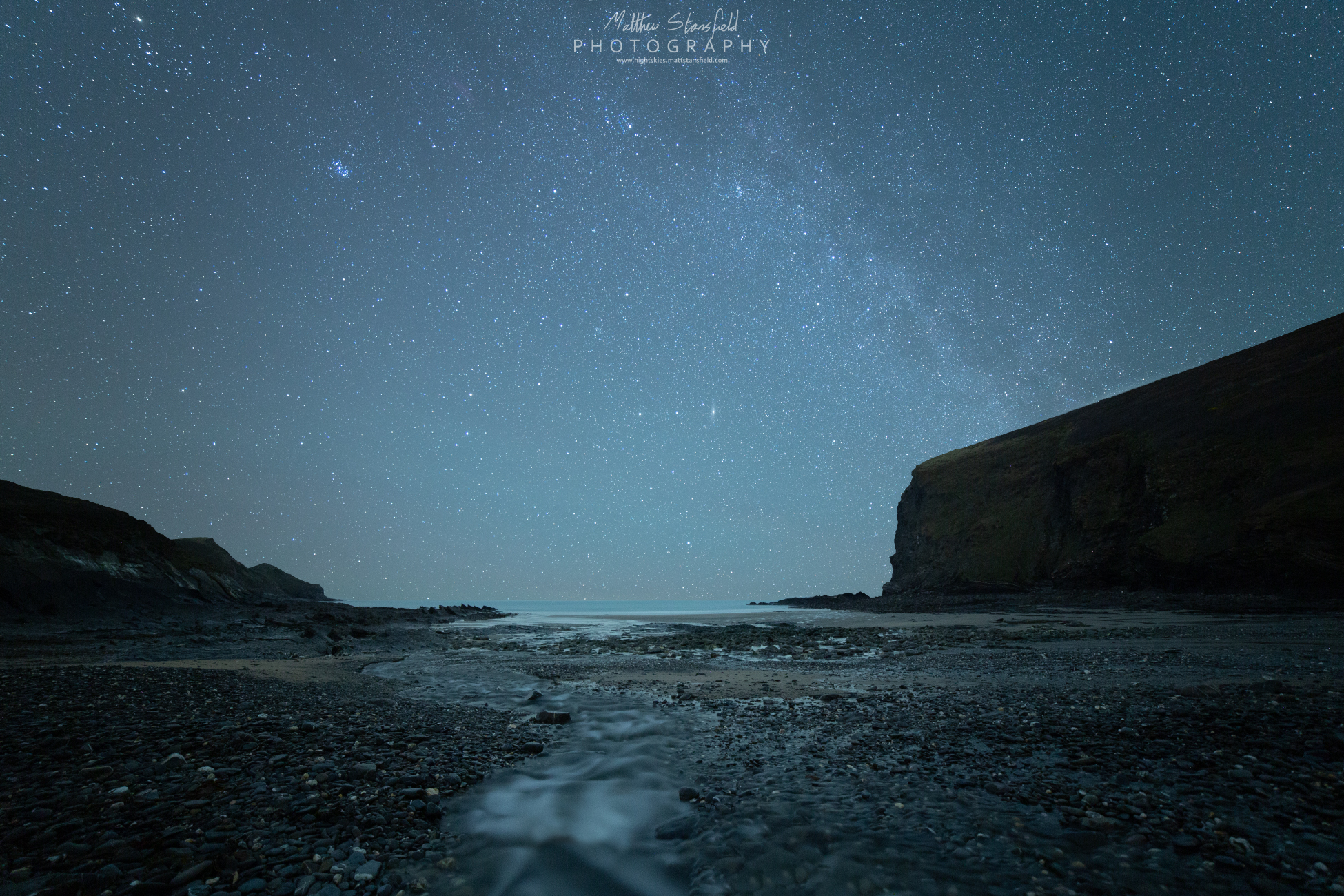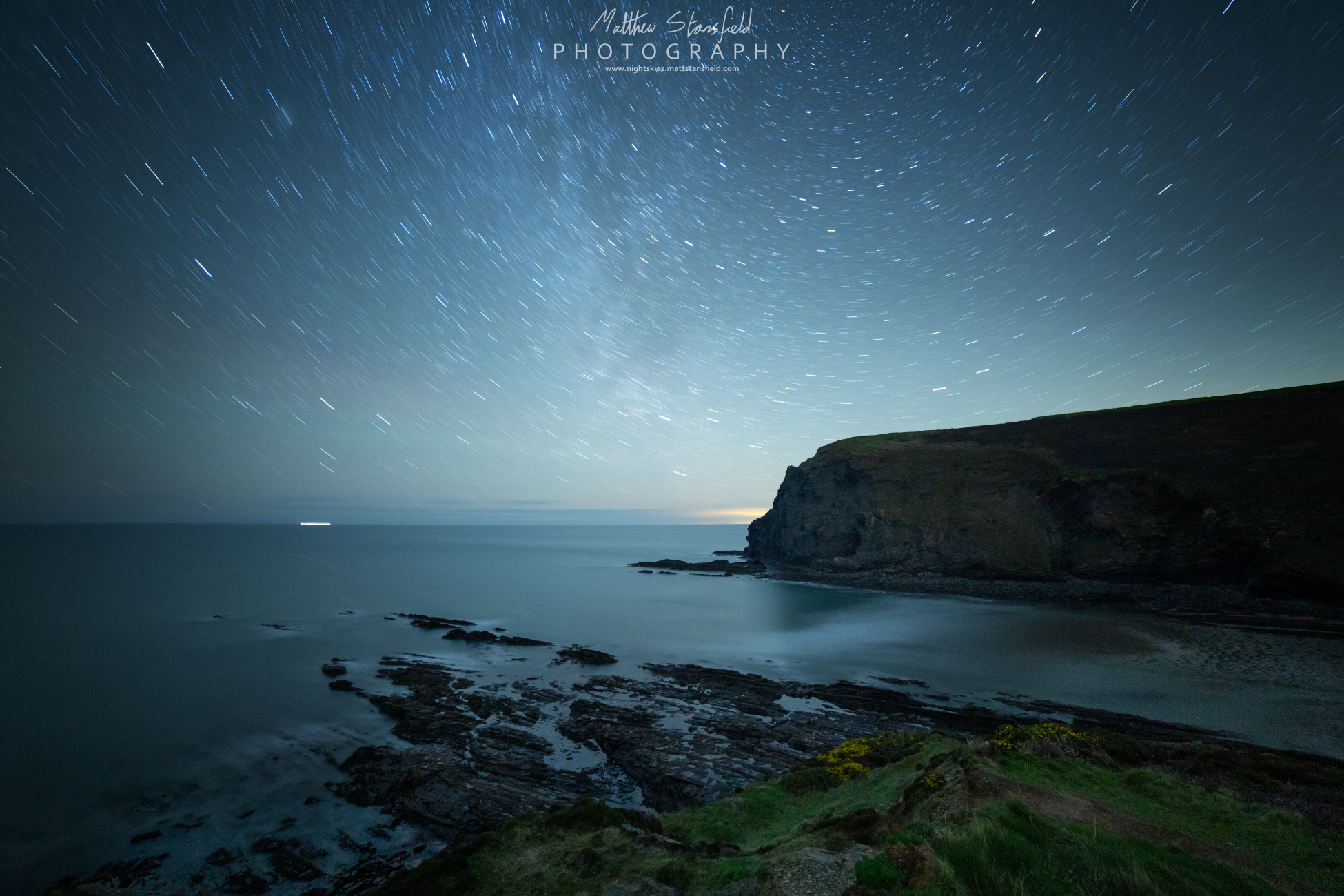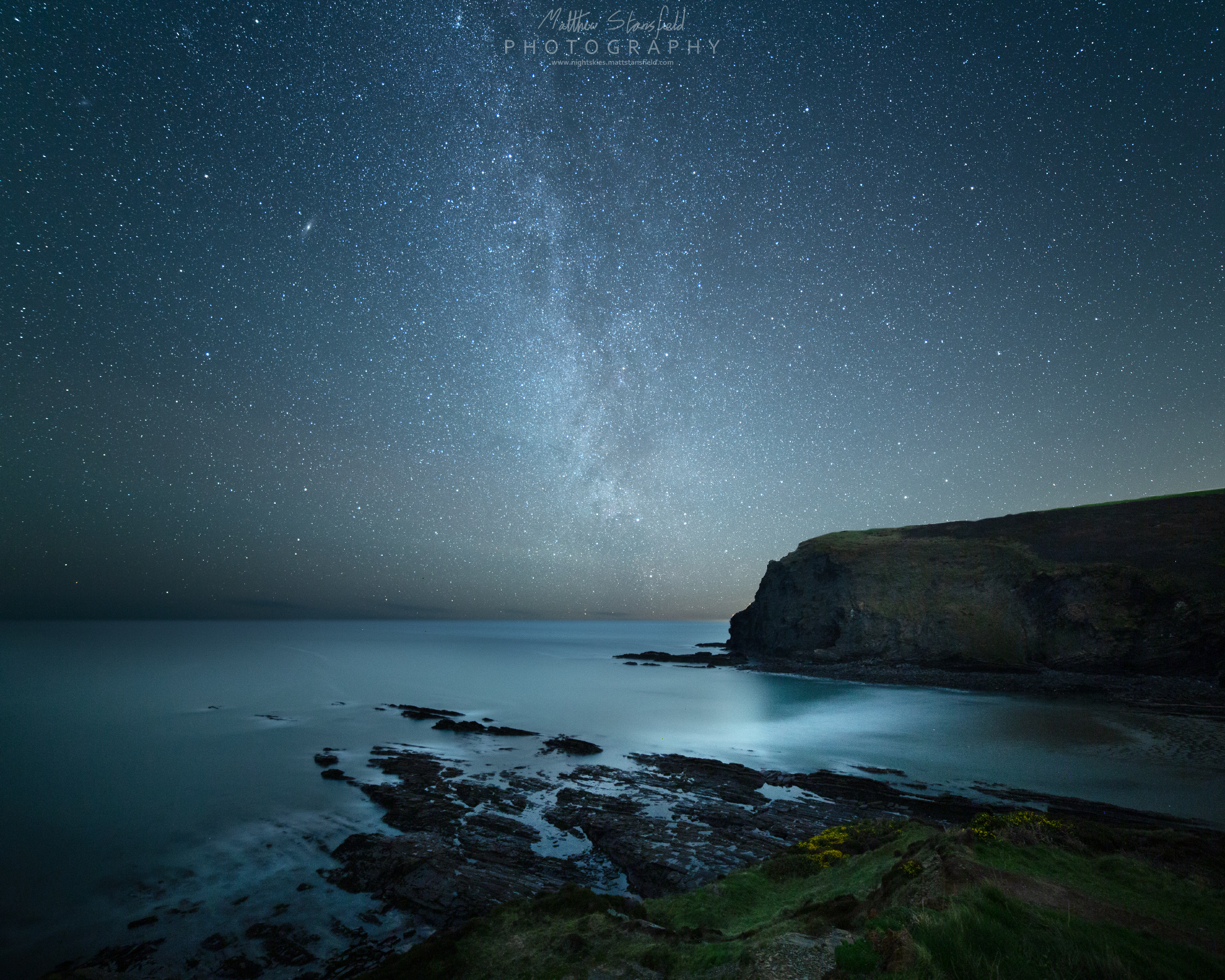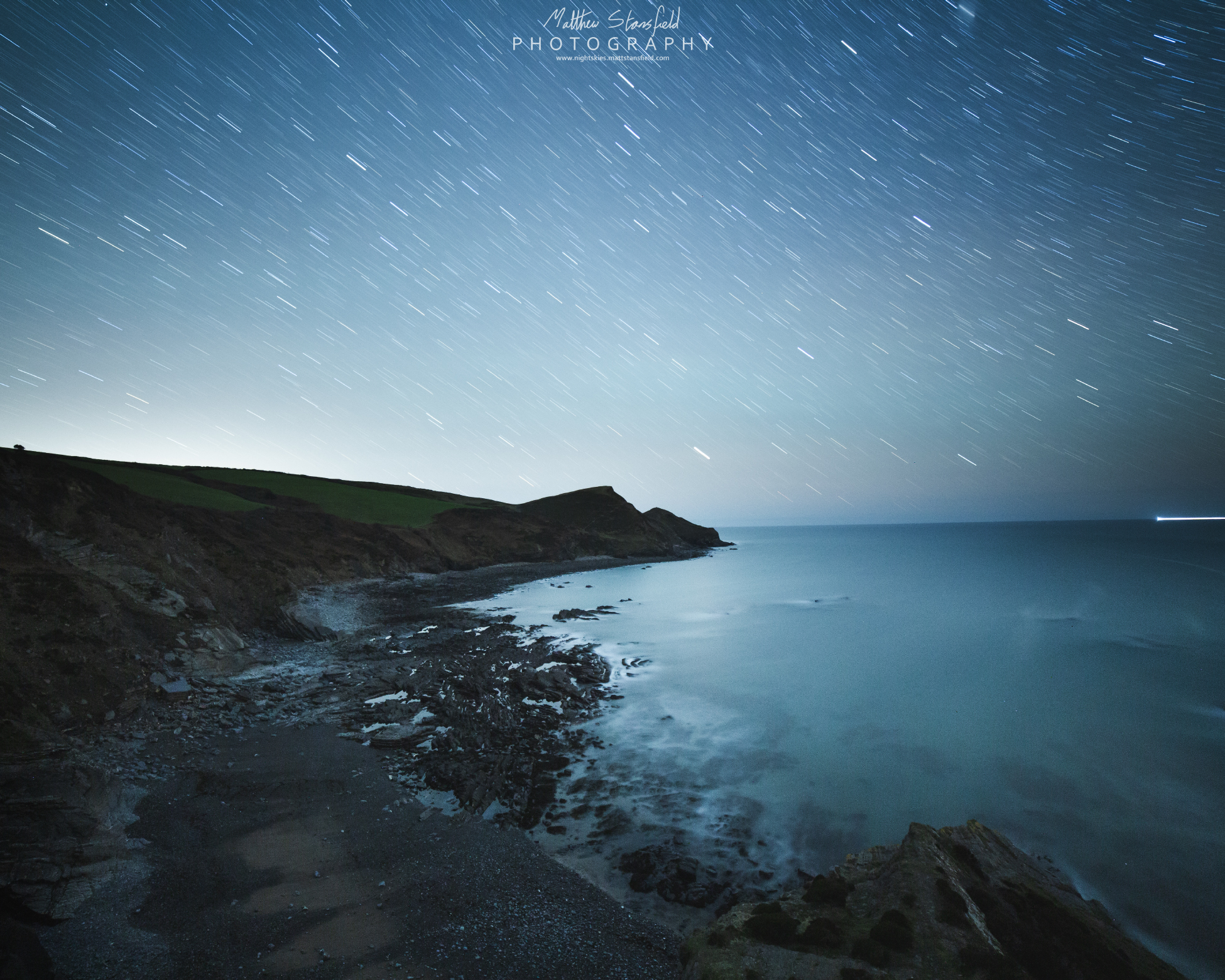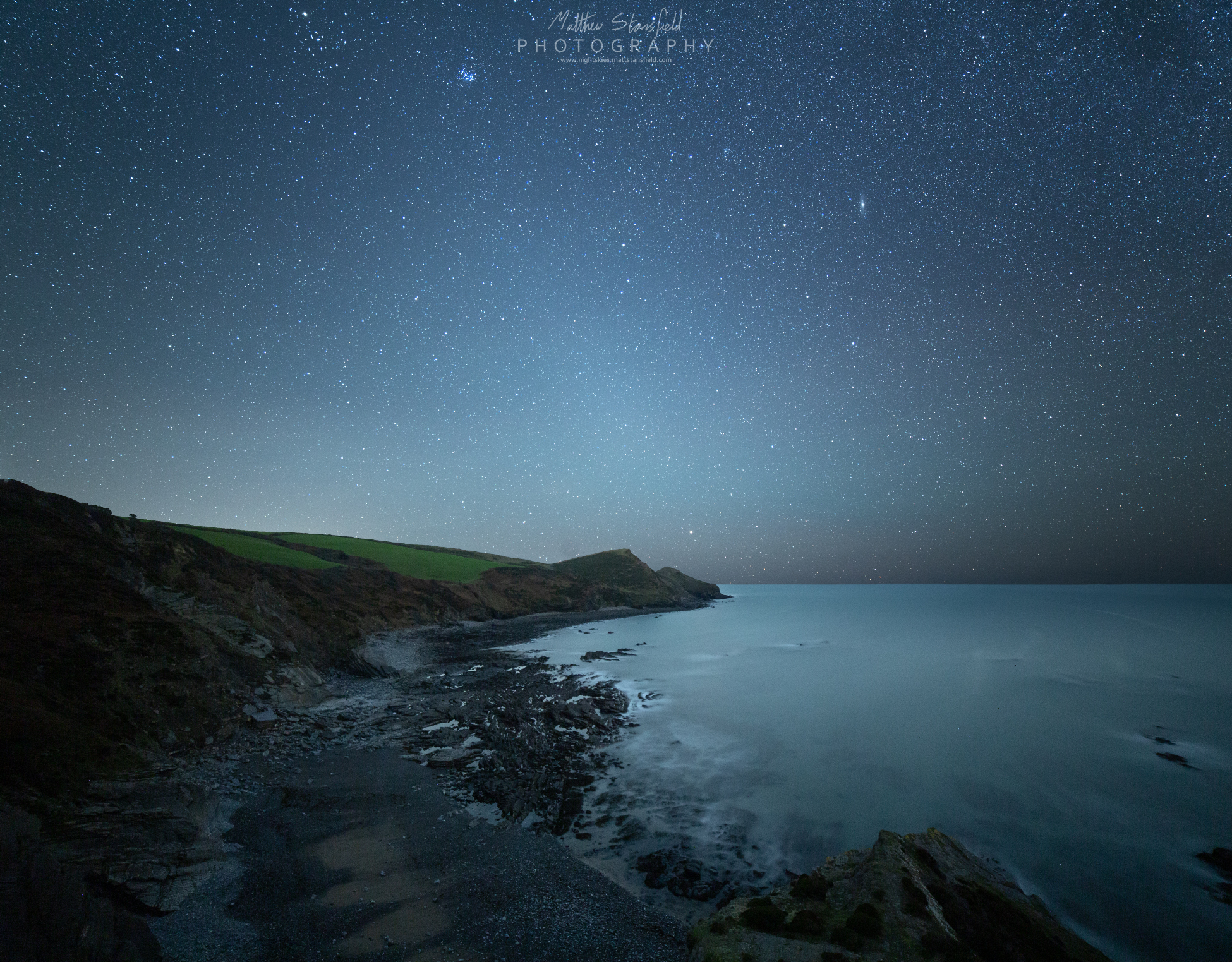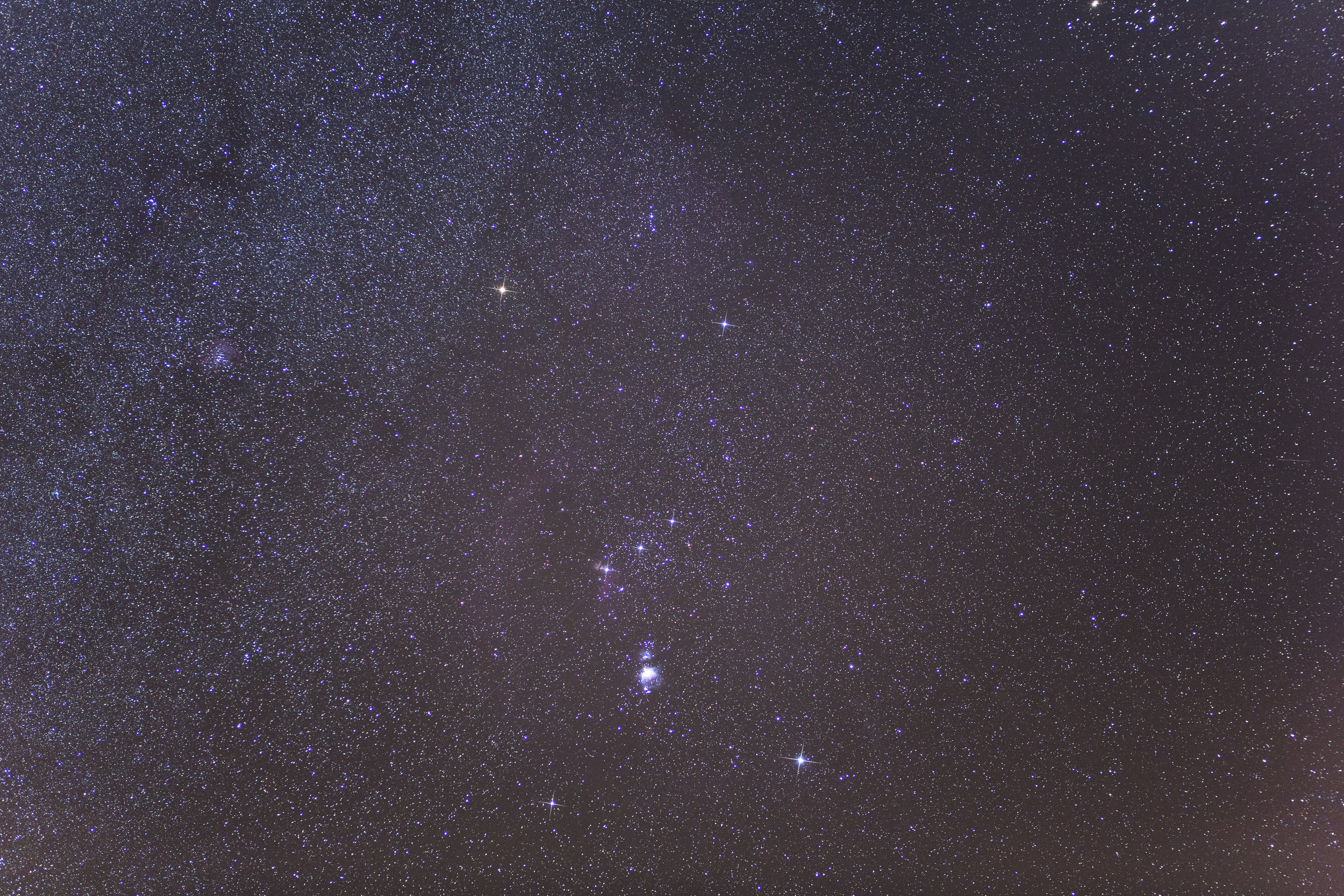January was an interesting month for astrophotography. The new year always provides a feeling of a new start and a renewed drive to work on fresh projects. My first shoot took me to the North coast of Cornwall and the ruins at Chapel Porth, which looks stunning under the winter Milkyway Way.
Chapel Porth
Wanting to make the most of the clear conditions, I decided to journey along the coast to Godrevy as my second location. Wanting to get close to the water’s edge, I remember clambering along the jagged rocks and negotiating the narrow gullies, which would occasionally be filled with surging seawater as the swell engulfed the foreshore. The retreating tide provided some security and it felt awe-inspiring to be amongst the elements under such a brilliant starry sky.
Godrevy Lighthouse
Godrevy Lighthouse & Andromeda Galaxy.
The following day, I travelled closer to home to Colliford Lake. This is a vast body of water on Bodmin Moor most renowned for its waters edge dead trees. Visiting here always makes me feel a bit sad. I am certain these trees had a story and seeing them as no more than a shadowy imprint on the landscape is humbling. I feel astrophotography naturally lends itself to the concept of passing time and these trees as a subject, fitted this concept well I thought.
Colliford Lake.
My final shoot of January took me to Whitsand Bay. This sandy stretch of coast is a striking part of south-east Cornwall and is littered with interesting old shipwrecks. On this night, I opted to try and photograph a few under the winter sky. This was my favourite from the night.
Boiler Beach - Whitsand Bay.























